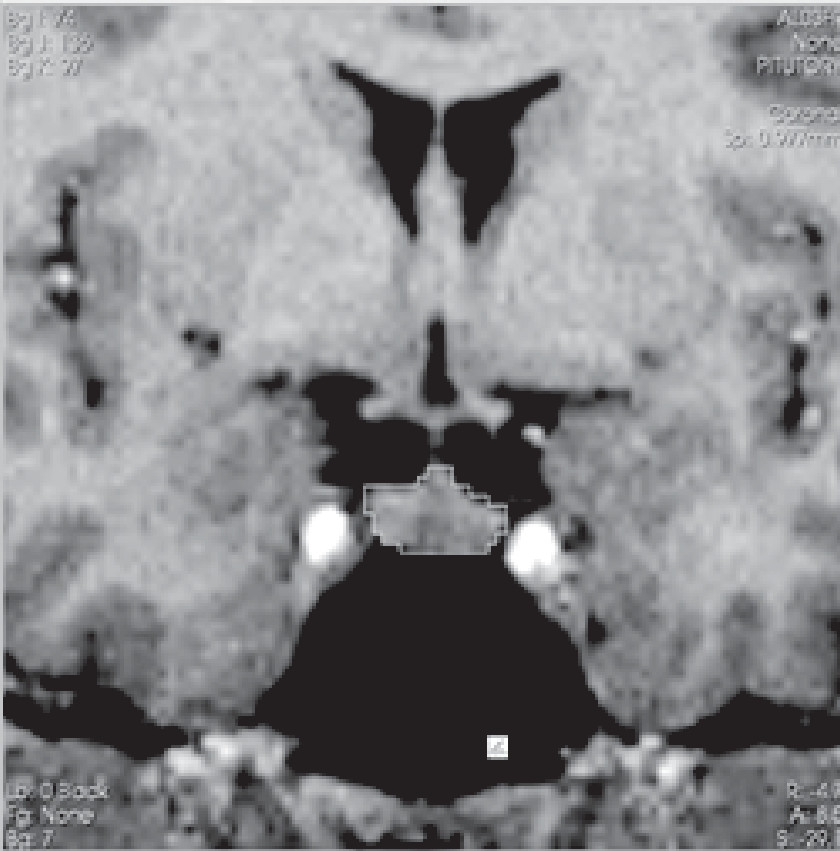We did not find a significant difference in the pituitary volume between patients with OCD and healthy control subjects. We also did not observe any correlation between pituitary volume and the OCD severity. Some previous studies reported smaller pituitary volumes in pediatric
4 and adult subjects
5,6 with OCD. Evidence suggesting HPA axis dysfunction has been reported among patients with OCD in the literature, with studies demonstrating elevated levels of cortisol,
12 corticotrophin-releasing hormone,
13 and oxytocin,
14 in addition to demonstrating smaller pituitary gland volume among patients with OCD compared with healthy control subjects.
4–6Although previous studies have shown decreased pituitary volume in patients with OCD, the volume of this structure may be linked to a variety of factors. MacMaster et al.
4 and Atmaca et al.
6 demonstrated smaller volume of pituitary in pediatric and adult patients, respectively. However, replication of these findings is essential, considering some of the important confounders in most of these studies. First, the specificity of pituitary volume changes to diagnosis and comorbid conditions appear to be an important consideration. For instance, 26% of our subjects with OCD had comorbid lifetime depressive and anxiety disorders even though the current mean MADRS score was not high. However, the relatively smaller number of participants with OCD with comorbid depression in our study might not have been sufficiently powered to detect a difference in the region of interest analysis. In addition, comorbid personality disorders can also affect HPA axis structure and function,
15 and this has not been assessed formally in this study or in previous studies on pituitary volume in OCD. Second, the mean age of onset of illness could also affect the pituitary because HPA dysregulation during peripubertal age may have greater consequences. The mean age at onset of OCD is late adolescence in our sample compared with peripubertal onset in some other studies on the topic. Third, the role of psychotropic medications on the pituitary needs to be considered. Antidepressants have a potentially significant effect on the functioning of HPA axis.
16 Although Jung et al
5 demonstrated a smaller pituitary volume in 12 medication-naïve individuals, this needs further examination in view of a small sample size. Our study reports on a large number of medication-naïve individuals with OCD, and this is in contrast to the previous studies. Finally, the factors apart from the main diagnoses such as life events play an important role on HPA regulation,
1 and hence it is important to take these factors into consideration while examining the brain changes.
Thus, although the HPA axis may play a role in the pathophysiology of OCD, one needs to carefully consider the above factors to ascertain the illness marker role of the HPA axis structures. In a cross-sectional study of this kind, it would be possible only to detect possible associations, and the stress-responsive nature of OCD might not be related to the development of the condition; rather, it could be a consequence of it. It would be interesting and informative to study the pituitary volume in a large sample medication-naïve patients with OCD without any comorbidity compared with healthy control subjects, because HPA abnormalities are more commonly seen with depression.
17 Additionally, longitudinal studies would provide evidence for the pathoplastic effect of illness course and duration on pituitary structure.


